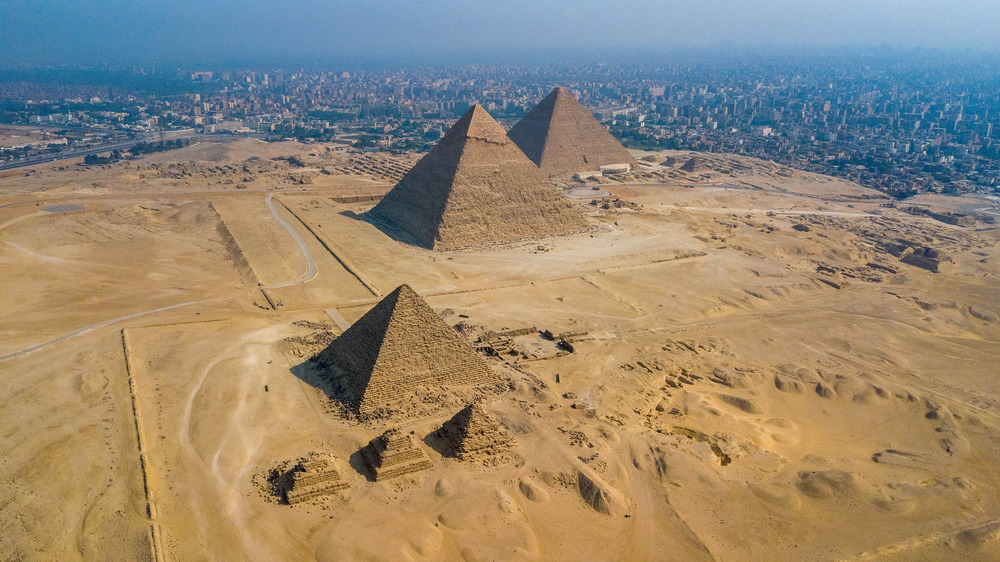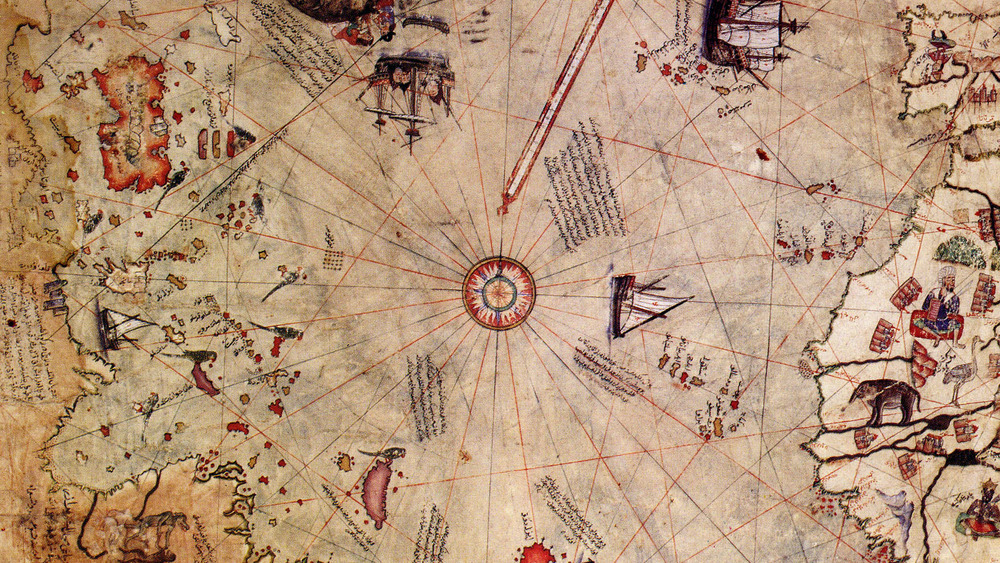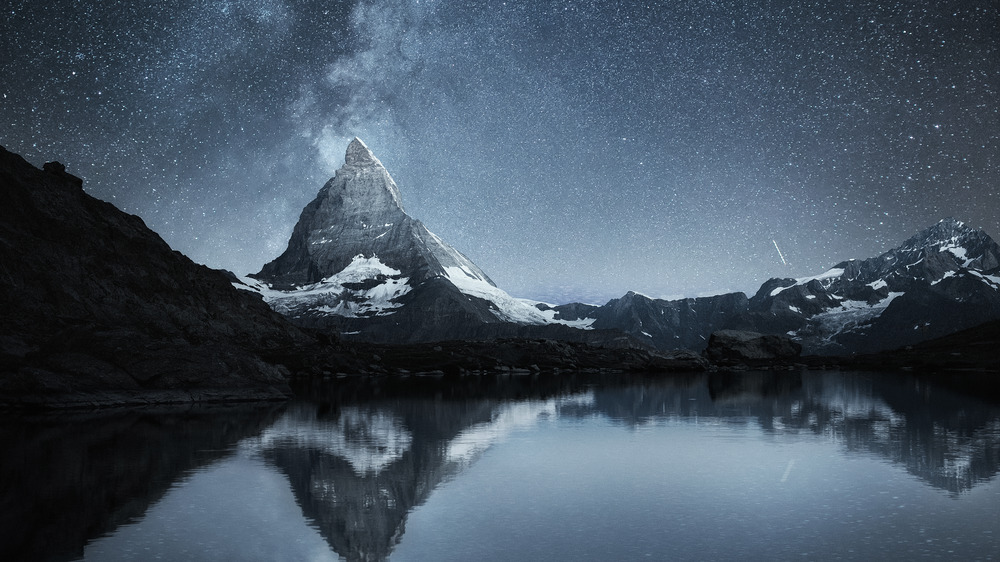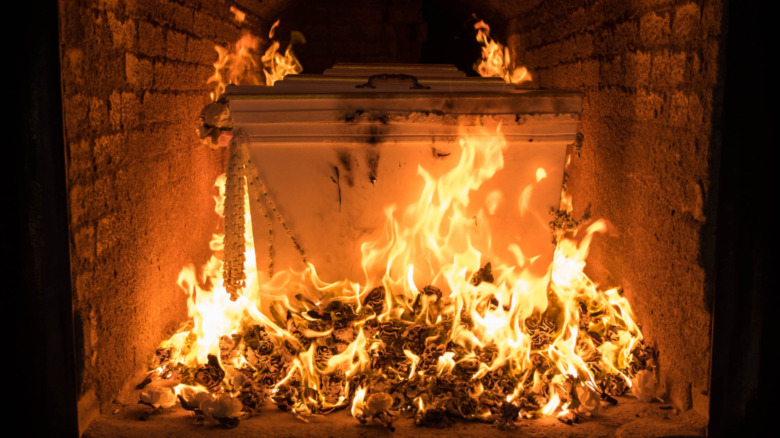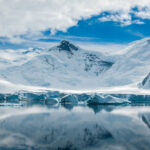
The Truth About Antarctica’s Pyramids
If any place on the globe can inspire mystery, it’s Antarctica: A remote, frozen, barren, jagged, wind-blasted sheet of miles-thick ice as massive as the United States and Mexico combined, as NASA shows. Millions of years of snowfall has created Earth’s “highest, driest, coldest, windiest and brightest” continent. It houses 90 percent of the planet’s ice which, if melted, would raise global sea levels by 200 feet.
And you know what else Antarctica has been said to house, both in fact and in fiction? Nazis on a secret expedition in 1939 (per Newshub), John Carpenter’s The Thing in 1982 (per YouTube), ancient, swampy rainforests (per CNN), Marvel’s tropical Savage Land featuring the Tarzan-like superhero Ka-Zar (per CBR), “Egyptian” pyramids (per Egyptian Geographic), ancient aliens who built a “master pyramid” there (per History Channel), and because why not, The X-Files‘ Mulder and Scully escaping from an alien spacecraft buried under the ice in 1998 (also on YouTube). Which of those are factual claims, and which fictional tales? That’s kind of the point.
Starting in 2016, news outlets across the internet picked up on the “pyramids in Antarctica” thing. And admittedly, from above — as so below — images do indeed look like they reveal unnaturally precise pyramidal structures along the Antarctic plains, such as those near the Shackleton Mountain Range, as the Daily Star reports. Their artificiality was purported by “satellite imagery expert” Joseph White on the History Channel’s Ancient Aliens, season 11, episode 1, and have been the subject of debate ever since.
A fringe claim of manmade pyramids on Antarctica
What exactly is the claim here? It’s surprisingly (or completely not surprisingly) vague. In its most basic form: manmade pyramids were built on Antarctica in the remote past, which would necessitate “the biggest revision of human history ever made,” as Euronews describes it. Any extrapolatory, alien-based, climatologically-cataclysmic slash conspiratorially-layered theories are tangential to this central premise.
Ever since pollen was discovered in Antarctica, as Live Science reported in 2011, it seems like the continent has become a renewed nexus of attention for those who want to believe in something beyond basic geological formations. In fact, the aforementioned quote by Euronews was from 2013, a full three years before Joseph White and Ancient Aliens popularized the story. The blog Chimu Adventures cites several other earlier articles as well, including a Russian blog in 2012 (now taken down), a report from Sputnik News in 2013, and a 2015 story on the site Ancient Code. All of them talk about Antarctic pyramids using dubious references and the conclusions of imprecisely-named “teams of researchers.”
In some ways, such interest makes sense. Antarctica is a fundamentally mysterious place. It’s out of sight to most, kind of like the surface of the moon, and alien in topography to many except those living in the Arctic. And like the moon, it’s an easy target for conjecture and seekers of, shall we say, “alternative history” (not the genre of fiction).
Theories connected to ancient civilizations and the last Ice Age
Of course, at some point Antarctica was free from ice and snow, but it hasn’t been that way for about 12 million years. A digitally rendered, 2019 map from the University of California at Irvine, posted by the BBC, shows us the land formations under Antarctica’s ice. If pyramids were built on the continent, they would have had to have been built on that land, in an epoch when our ancestors were just becoming upright (also per CNN). That is, barring some uncanny aberration in climate that rendered the continent accessible for some period of time, or a heretofore unknown, technologically advanced human civilization in our distant past. Or aliens.
Theorists such as Graham Hancock often point to around 10,000 years ago, at the end of the last Ice Age, as the transition when that kind of civilization died and became lost to history (due to some global catastrophe, as Scientific American explains). Evidence such as apparent water damage around the base of the Sphinx is often cited to support said claims, as Curiosmos relates, as are Biblical stories of the flood, which appear in over 200 ancient accounts worldwide, per Ark Encounter. Of course, all connections between such explanations and the pointy-topped, snowy mountains of Antarctica is pure dot-connecting.
Adding to the puzzle is a 500-year-old map called the Piri Reis Map, transcribed in 1513 by Turkish cartographer Hagii Ahmed Muhiddin Piri from 2nd-century Ptolemaic maps, showing Antarctica 6,000 years age without ice, per Vintage News.
Freeze-thaw erosion created the Antarctic pyramids
What then caused the pyramidal shapes in the Antarctic? Erosion. Yep, just that.
CBS News quotes Eric Rignoc, Professor of Earth System Science at UC Irvine, who plainly said, “This is just a mountain that looks like a pyramid.” He cited a particular peak in Ellsworth Mountains, first discovered by aviator Lincoln Ellsworth on November 23, 1935, along an Antarctic mountain range called Heritage Range. The area is known for its Cambrian-period fossils from 500 million years ago.
Mauri Pelto, Professor of Environmental Science at Nichols College in Dudley, Massachusetts, goes on to explain the “freeze-thaw erosion” that can lead to a distinctive, pyramidal mountain shape. Freeze-thaw erosion “happens when snow or water fills up cracks within a mountain during the day. When night falls and temperatures drop, the snow freezes and expands, turning into ice. The expanding ice causes the cracks to grow.” When this happens again and again, larger cracks can cause entire sections of rock to break off. If a mountain looks uniform on all four sides, “You don’t have any rock layers that are harder to erode.” Matterhorn in the Swiss Alps is a well-known example of this phenomenon.
So sure, aliens and ancient civilizations certainly sound like alluring explanations, and make for good fiction. But the pyramids in Antarctica? Just geology, which is cool enough.

Messed Up Things We Learned From The Facebook Whistleblower

How Nicolaus Copernicus Became A Doctor Without Getting A Degree

The Truth About Liberty Ships Of World War II

How Much Do The Vatican's Swiss Guards Get Paid?

The Story Behind Chicago's Nickname

The Messed Up Truth About Cult Leader Pyotr Kuznetsov

Here's What Would Happen If The US Declared Martial Law

The Scary Details Behind Queen Elizabeth's Assassination Attempt

What You Should Know About Tenochtitlan's Main Temple

The Craziest Ways Dictators Protect Themselves
